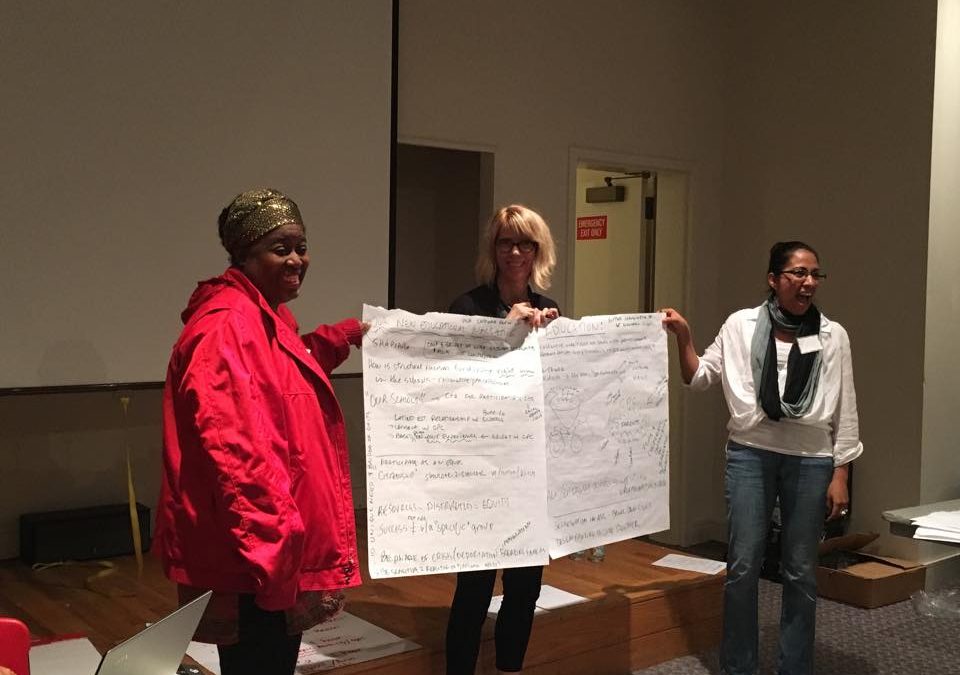Featured on The ACEs Connection Network, July 13, 2016.
Read the article below or visit the ACEs full report.
Mobilizing action can be intimidating. Creating a movement even more so. John Hagel provides the following definition of a movement: “an organized effort mobilizing a large number of independent participants in a grassroots effort to pursue a broad agenda for change.”
He indicates that there are two key ingredients in movement making: 1) compelling narratives and 2) fostering creation spaces. In Buncombe County, we are experimenting with both of these notions.
Opportunity-based Narrative
A compelling narrative is an invitation to action based on a shared aspiration. An opportunity-based narrative brings people together across space on a shared quest. According to Hagel, “Narratives provide the context and shared purpose that pull others into the movement and keeps them motivated and focused as they encounter and deal with the myriad of unexpected obstacles standing in the way of meaningful change.”
In Buncombe County, we are working on a galvanizing narrative for resilience. We enlisted the expertise of the Frameworks Institute. They are experts in the “science” of communication. Through their cutting-edge research they can choose frames that resonate with the everyday person on the street. Based on their research they recommend the following frame for resiliency (see figure 1).
By stepping into the conversation with this framework we can better enlist the public in a shared purpose of “tipping our community’s resilience in a positive direction.”
Creation Spaces
The second key ingredient of a movement is a unique form of organization that Hagel refers to as a “creation space.” Once again, Hagel:
“The basic organizational unit of a creation space is a small group of people who come together and collaborate in ways that help them individually and collectively to achieve higher levels of impact. Through this collaboration, they form deep trust-based relationships within their group because they are sharing their vulnerabilities in a quest to learn from each other. These small groups multiply and take a lot of local initiative – they’re constantly experimenting and improvising in an effort to discover ways to achieve more impact.”
The key to these groups is their size. They are small enough that communication is fluid, trust is strong, and their scale is such that they can adapt quickly to what is working or not working, adjusting to local conditions. It is important to understand the when they get too big, they fall apart. The size is key.
This is important because often times when something is working well we just want to keep expanding the table, inviting more people. As the size increases we lose some of the key conditions for effectiveness. Movements are created through a distributed ownership that is led by the community. Richard Harwood builds on the concepts of Hagel with his call to turn outward, “using the community, not your conference room, as the main reference point for decisions…” (seewww.theharwoodinstitute.org for excellent resources).
To support the concept of creation spaces in our community, we are using grant dollars to fund what we are calling “tipping grants.” These grants are up to $5000 and they are for organically driven efforts at the local level. Our call out to the community to participate in our resiliency building efforts was remarkable.
With this small nudge, many positive things have sprung. For instance, a nascent community coalition called Cothinkk heard about these grants and offered two workshops for the community on grant writing. From these two workshops we received over 50 applications! Each one of these applications reflect a current aspiration in our community. We can literally map out these hopes across neighborhoods, community centers, and parent organizations to name a few. To date, we have funded 12 grants. In addition, among those grants that we did not fund, we are meeting with the applicants to talk about other ways we can hook them up into our community’s resource grid.
These grants give lift to emerging community “creation spaces.” Each grant galvanizes people at a local level to come together in small groups to build greater resiliency in our community. Many other unplanned connections are happening. Cothinkk agreed to sponsor a follow up workshop for the community focused on teaching the results-based accountability model – this builds increased capacity for community members to apply for grants and track their progress.
We are also pushing our narrative frame deep into our community. By sharing this frame, we can enlist people in our quest helping them to understand how they can contribute. For example, one of the grantees gives “Hood Hugger” tours in our community (http://www.citizen-times.com/s…-landmarks/81473386/). We are working with him to infuse language into his tours that asks participants to think about our community’s resource grid: who are we leaving out? Which communities are in the dark? How can we improve the flow of resources so that we are all part of our community’s grid? His challenge is for everyone to help stack more positive factors on our community scale.
So many things are percolating in our community right now. Our focus is on giving lift to these current seeds of “now” – allowing our community to lead us forward – providing support where we can. With a clear purpose of where we are heading, a nudge here and a tug there, shifts our community forward. By moving “outward” we are letting the dynamics of a complex system work for us. Small nudges, we hope, resulting in big effects.

